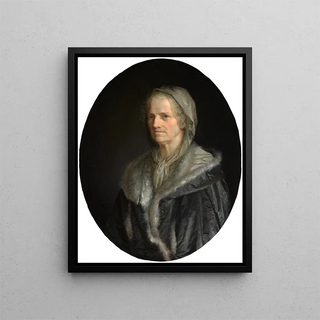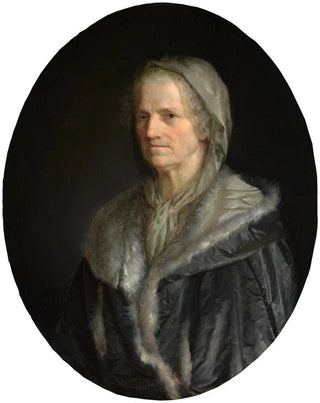Art print | Portrait of Madame Simon - Pierre-Paul Prud'hon


View from behind

Frame (optional)
The "Portrait of Madame Simon" by Pierre-Paul Prud'hon is an iconic artwork from the early 19th century, embodying both elegance and psychological depth. This painting, created between 1804 and 1806, reveals a woman with an penetrating gaze, whose presence seems to transcend the simple frame of the canvas. Through this piece, Prud'hon not only captures the physical features of his model but also manages to express an intimacy, an emotional complexity that invites the viewer to reflect on Madame Simon's inner life. This portrait, both classic and innovative, reflects a time when the art of painting was being reinvented under the influence of neoclassical and romantic currents.
Style and uniqueness of the work
Prud'hon's style is distinguished by his subtle use of light and shadow, creating a soft and intimate atmosphere. In the "Portrait of Madame Simon," delicate nuances of color blend harmoniously, while the drapery of the model's dress appears almost alive, emphasizing the sensuality of the composition. The artist skillfully plays with textures, rendering Madame Simon's skin with a palpable, almost tactile softness. Minute details, such as reflections in her eyes and the finesse of her features, demonstrate impressive technical mastery. Furthermore, the model's slightly turned posture adds a dynamic quality to the work, suggesting movement and life beyond the canvas. This unique approach makes this portrait a true work of art, where each element contributes to a broader narrative.
The artist and his influence
Pierre-Paul Prud'hon, a major figure in French painting, established himself through his distinctive style and his ability to combine classicism and romanticism. Trained in the academic tradition, he nonetheless sought to move away from the rigid conventions of his time, exploring more personal and emotional themes. His influence extends beyond his era, inspiring many artists who followed in his footsteps. By incorporating elements of romantic sensitivity into his portraits, Prud'hon paved the way for a new way of perceiving subjects.

Matte finish

View from behind

Frame (optional)
The "Portrait of Madame Simon" by Pierre-Paul Prud'hon is an iconic artwork from the early 19th century, embodying both elegance and psychological depth. This painting, created between 1804 and 1806, reveals a woman with an penetrating gaze, whose presence seems to transcend the simple frame of the canvas. Through this piece, Prud'hon not only captures the physical features of his model but also manages to express an intimacy, an emotional complexity that invites the viewer to reflect on Madame Simon's inner life. This portrait, both classic and innovative, reflects a time when the art of painting was being reinvented under the influence of neoclassical and romantic currents.
Style and uniqueness of the work
Prud'hon's style is distinguished by his subtle use of light and shadow, creating a soft and intimate atmosphere. In the "Portrait of Madame Simon," delicate nuances of color blend harmoniously, while the drapery of the model's dress appears almost alive, emphasizing the sensuality of the composition. The artist skillfully plays with textures, rendering Madame Simon's skin with a palpable, almost tactile softness. Minute details, such as reflections in her eyes and the finesse of her features, demonstrate impressive technical mastery. Furthermore, the model's slightly turned posture adds a dynamic quality to the work, suggesting movement and life beyond the canvas. This unique approach makes this portrait a true work of art, where each element contributes to a broader narrative.
The artist and his influence
Pierre-Paul Prud'hon, a major figure in French painting, established himself through his distinctive style and his ability to combine classicism and romanticism. Trained in the academic tradition, he nonetheless sought to move away from the rigid conventions of his time, exploring more personal and emotional themes. His influence extends beyond his era, inspiring many artists who followed in his footsteps. By incorporating elements of romantic sensitivity into his portraits, Prud'hon paved the way for a new way of perceiving subjects.






